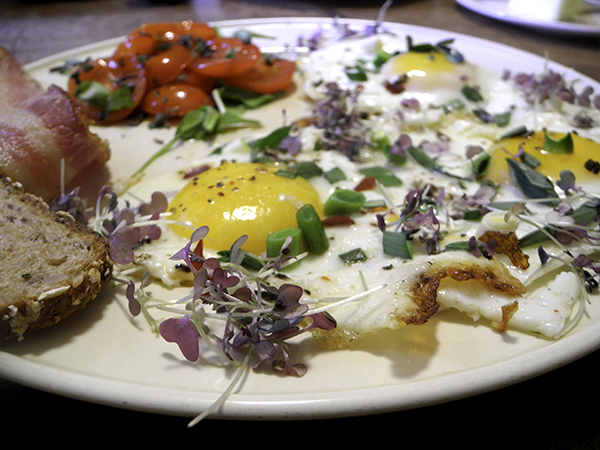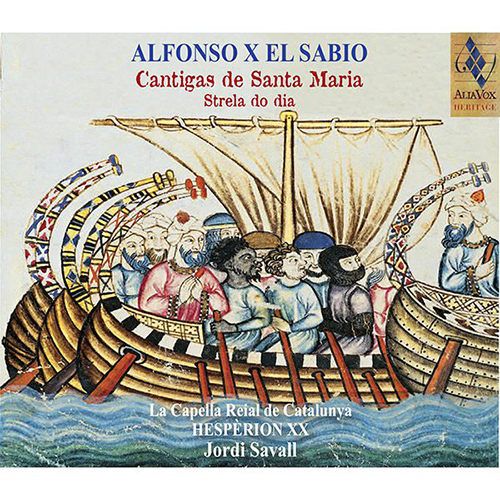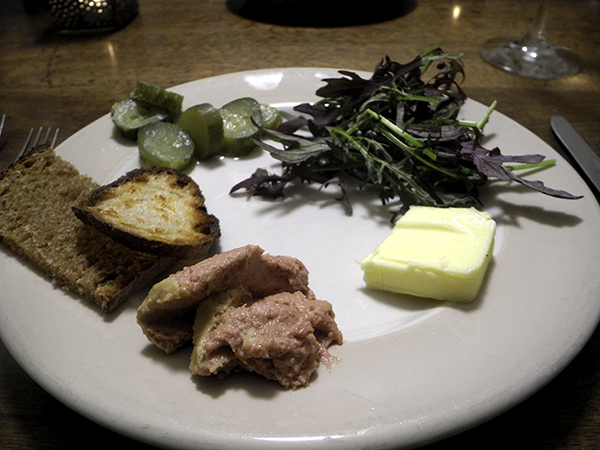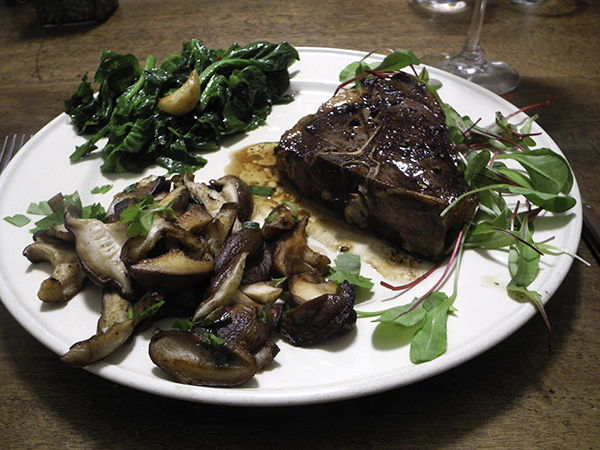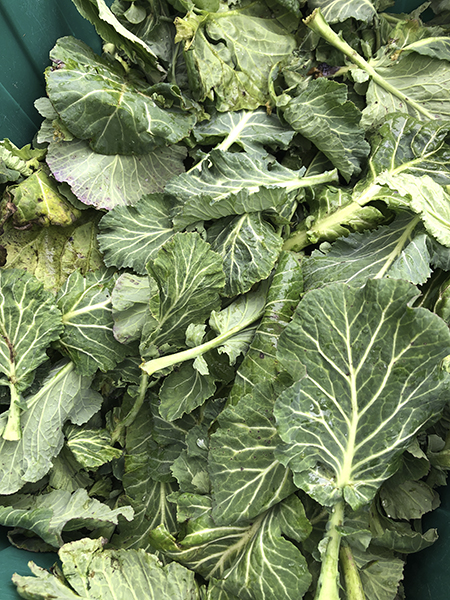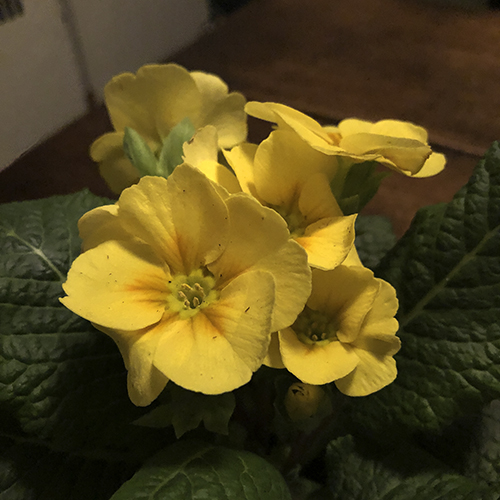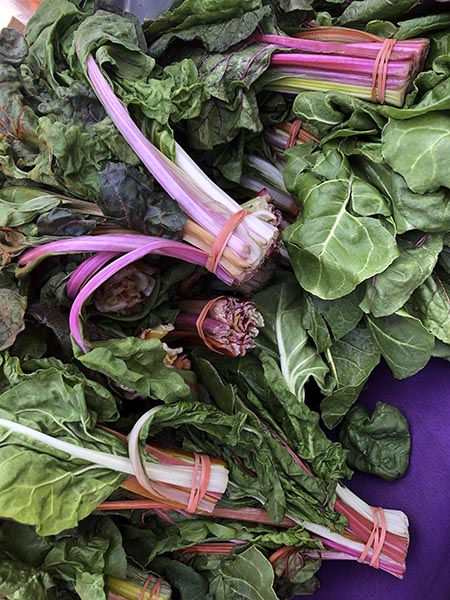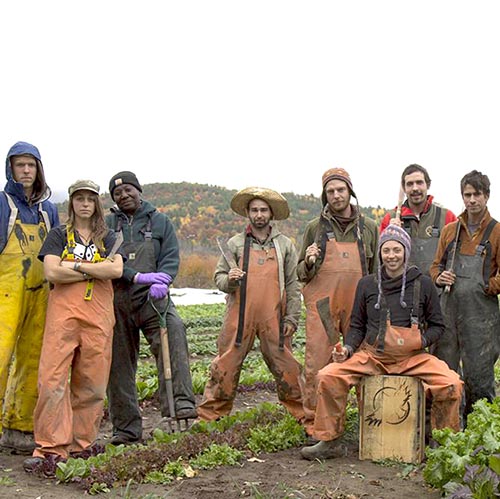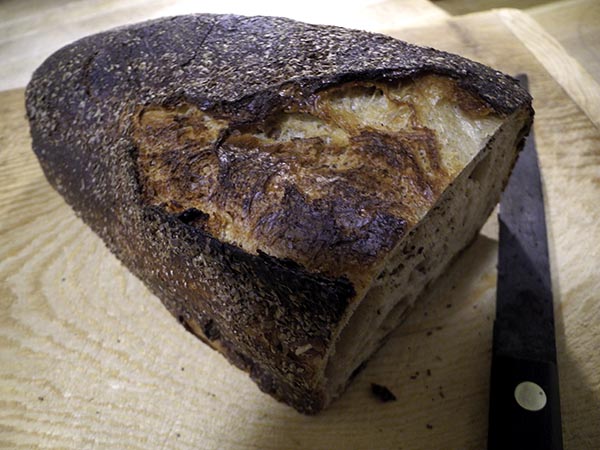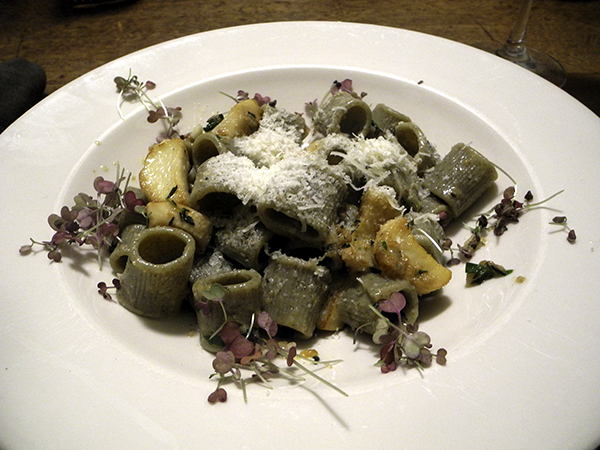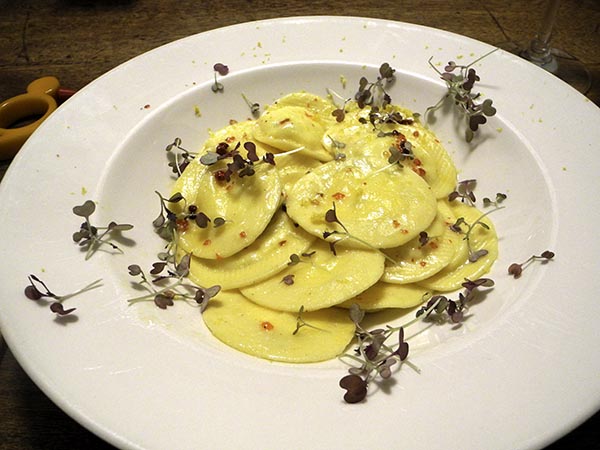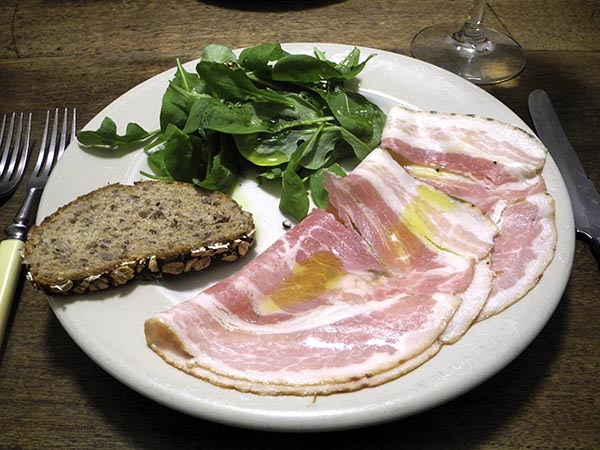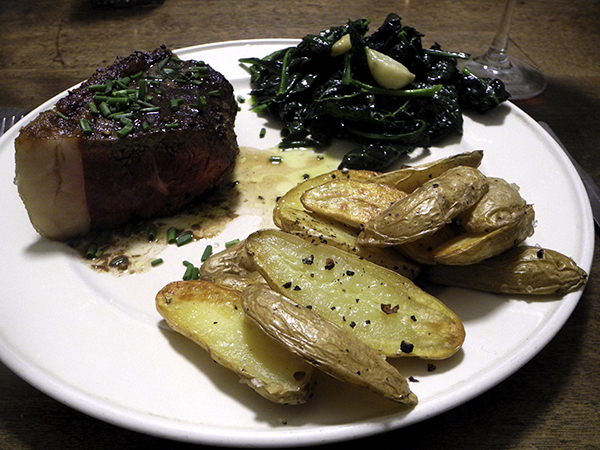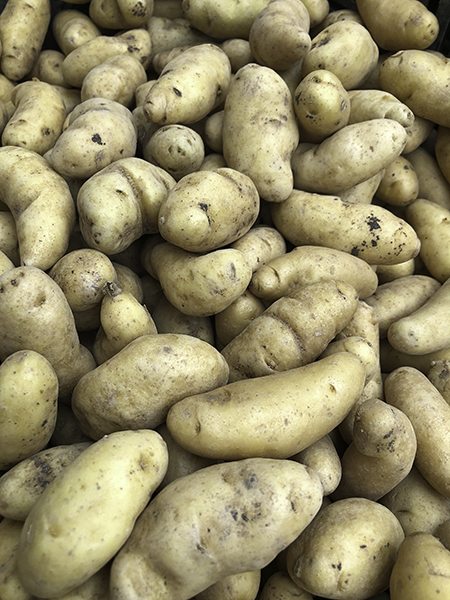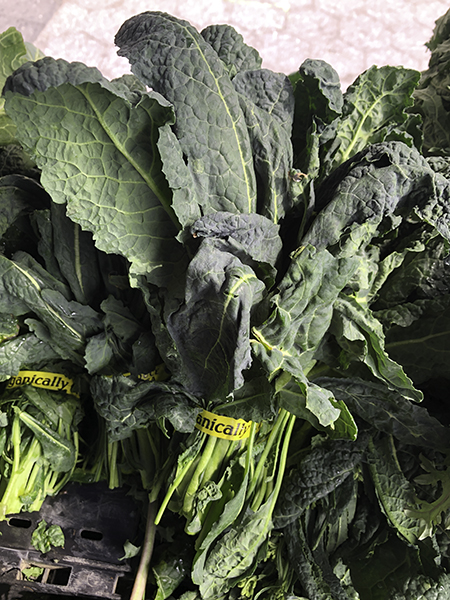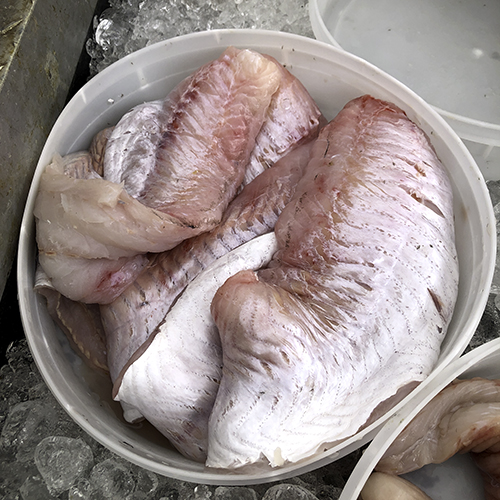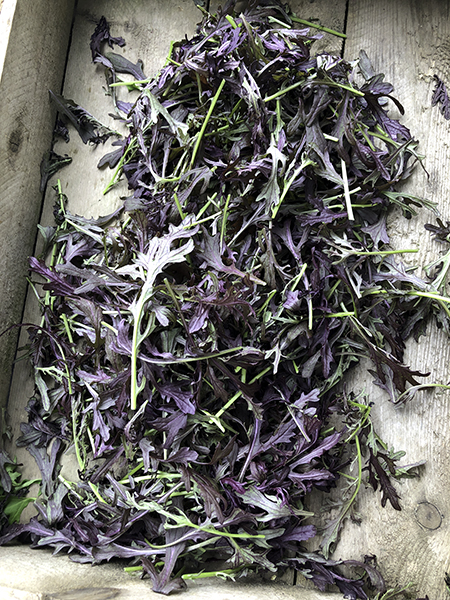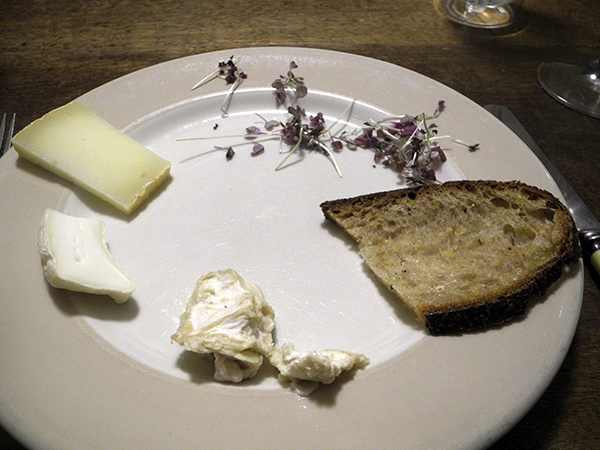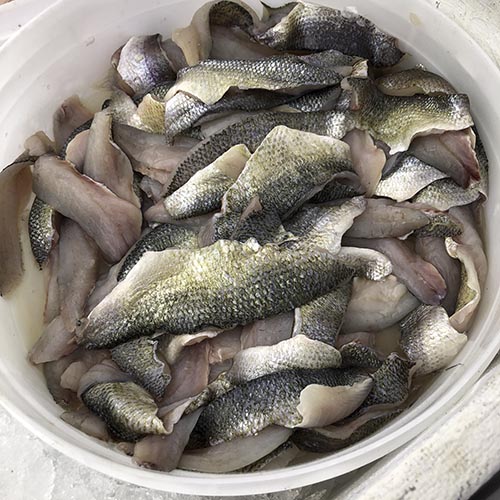
A fish bake.
Although there were some obvious differences and some less than obvious even to me, after I spotted the little fillets in the fisherman’s family’s stand, I almost immediately thought of this meal as a modest salute to the Great Lakes of what are generally describe as one’s ‘formative’ years.
I brought home exactly one dozen of these fresh beauties on Monday, but no more, although they were not expensive, since I was already worried about fitting them into a single non-reactive pan.
Because of the difficulty – or at least the anxiety anticipated with the idea – of turning over that many thin fillets more or less at the same time, I decided I would bread then bake them, obviating the flipping challenge. This is when I really started sliding, mentally back into the Midwest, since this is not how I usually cook fish of any kind.
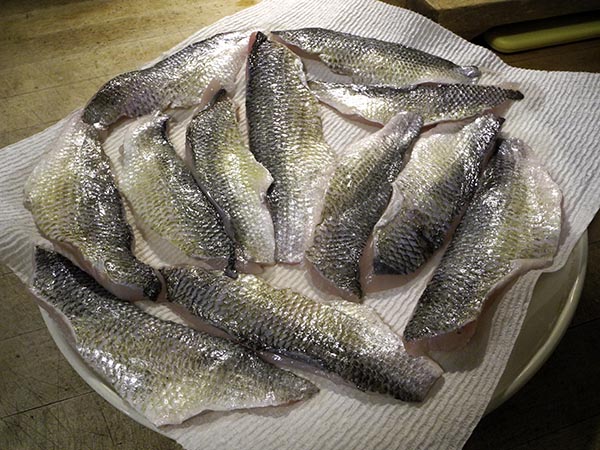
Half an hour before I expected to begin their cooking I removed the perch from the refrigerator and placed them on a plate on the counter.
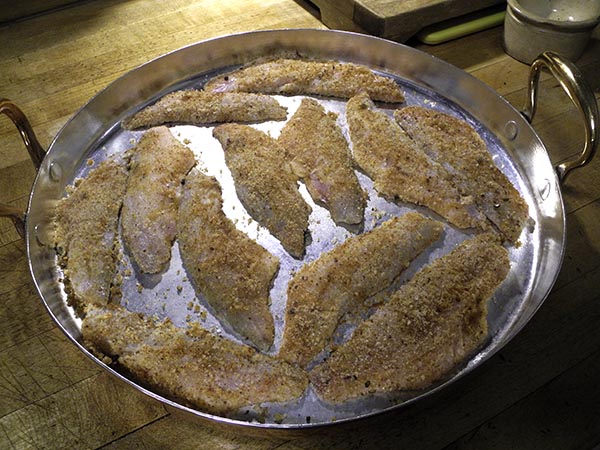
Then the process began in earnest, my excitement now including that of seeing them lying inside the perfect pan, a French antique I had recently bought and had re-tinned, exactly for times like this.
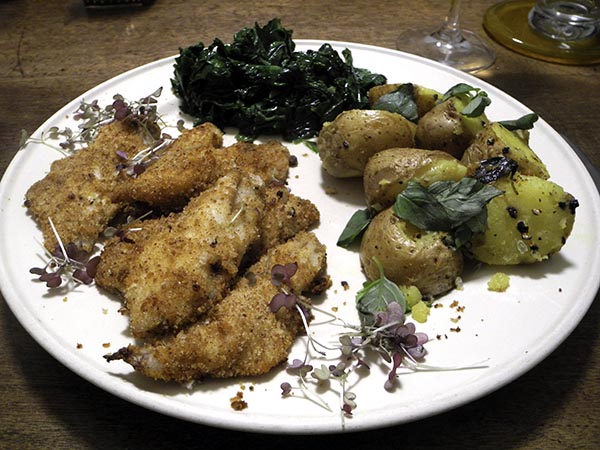
- twelve small coastal white perch fillets (a total of 15 ounces) from P.E. & D.D. Seafood in the Union Square Greenmarket, submerged first in a mixture of 2 tablespoons of melted butter and 2 teaspoons of juice from a Chelsea While Foods Market organic lemon, then rolled in a mixture of roughly half a cup of homemade breadcrumbs, sea salt, freshly ground black pepper and a large pinch of crushed dried habanada pepper [a paprika or another dried chili, or even crushed mustard seed would also work], arranged inside a very heavy antique low-sided,13″ tin-lined copper pan and set in an oven preheated to 500º, baked for roughly for a very few minutes, because of their size, or until the breading was crispy and golden brown, removed and allowed to cool for a couple minutes before serving, garnished with micro red mustard from two Guys from Woodbridge [the recipe was adapted from Livestrong.com]
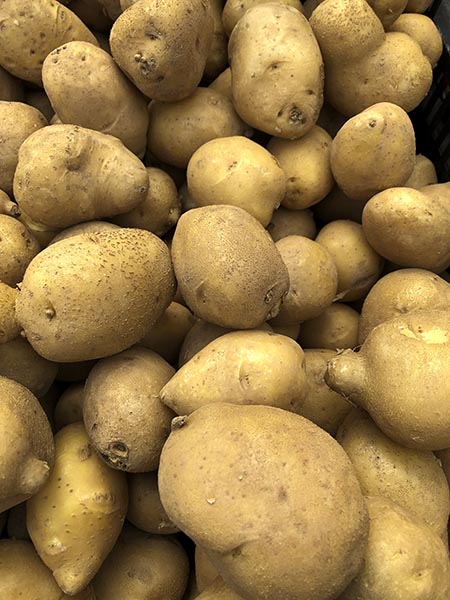
- just under a pound of small sweet Natasha potatoes from Phillips Farms, scrubbed, boiled unpeeled in generously-salted water until barely cooked through, drained, halved, dried in the still-warm large vintage Corning Pyrex Flameware blue-glass pot in which they had cooked, tossed with a little Trader Joe’s Italian Reserve extra virgin olive oil, seasoned with salt and pepper, and tossed with some home grown basil from Barry’s Artsy colleague Becca
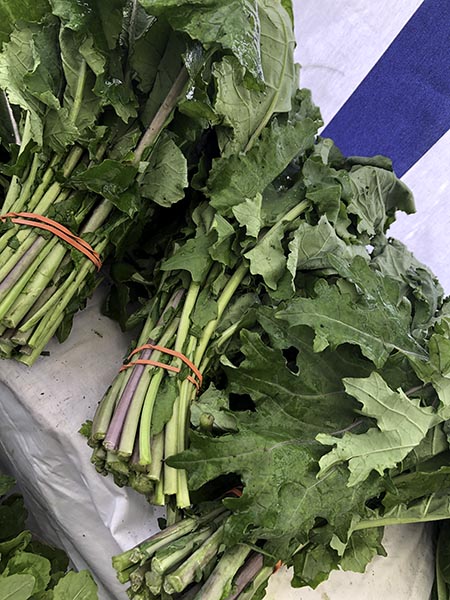
- some super sweet flat kale from Lani’s Farm, wilted inside a large antique copper pot in which one halved garlic clove from Norwich Meadows had first been allowed to sweat in a little olive oil until pungent, seasoned with salt, pepper, and a drizzle of fresh olive oil
- the wine was a French (Loire) white, Sancerre, Sommet Doré 2017, from Astor Wines
- the music was Lully’s 1683 tragédie en musique, ‘Phaéton’, Christophe Rousset conducting Les Talens Lyriques and the Chœur de Chambre de Namur
